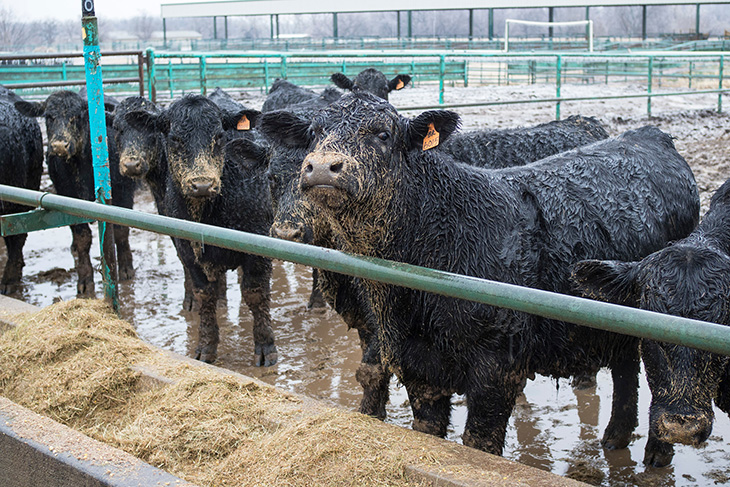



Know the signs of foot rot in livestock
Excessive rain is a signal for cattle producers to keep an eye out for lameness in their animals, the first sign of foot rot.Foot rot is a painful condition that can become chronic if treatment is not provided, allowing for other aspects of the animal’s health to be affected as well, said Dr. Barry Whitworth, Oklahoma State University Extension veterinarian and food animal quality and health specialist. To prevent permanent problems and a shorter lifespan, examination and treatment should be prompt.
Whitworth recently spoke about foot rot on the agricultural television program SUNUP. The video segment is available online.
Foot rot is caused by a subspecies of Fusobacterium necrophorum, although other bacteria may be involved. The problem arises when bacteria enter foot tissue through skin breaks caused by puncture wounds, abrasions or continuous exposure to wet conditions between seasons. Once bacteria gain a foothold, they multiply and release toxins that cause damage.
Diagnosis of foot rot requires a thorough examination. Lesions usually infect both claws of the hoof, so if only one side is infected, the problem is likely not foot rot.
“Look for signs of swelling between toes and for redness or necrotic tissue, as well as separation of the skin at the hoof wall,” Whitworth said. “Most cases of foot rot will have a foul-smelling odor. The foot also may feel warm to the touch, which distinguishes foot rot from fescue foot.”
Cattle with foot rot may exhibit a fever, refuse to eat or show a reluctance to bear weight on the infected limb because of pain. Treatment begins with cleaning the foot and removing as much necrotic tissue as possible before applying a topical medication. Most cases do not require bandaging.
Antibiotics will be necessary, and pain management may be as well. If deeper foot structures are damaged, the animal may need more aggressive therapy.
Cattle producers also need to be aware of a variant sometimes called “super foot rot,” which presents a faster onset, extreme necrosis and erosion of the interdigital space. This condition is resistant to regular treatments and is thought to be caused by a resistant strain of Fusobacterium.
Although vaccines or other products on the market might claim to address the issue, OSU Extension recommends producers first consult with their local veterinarian to determine the best options to safeguard a herd.
Cattle that have foot rot should always be isolated until healed. Preventing livestock from standing in wet, manure-infested areas can help avoid the problem, Whitworth said.



